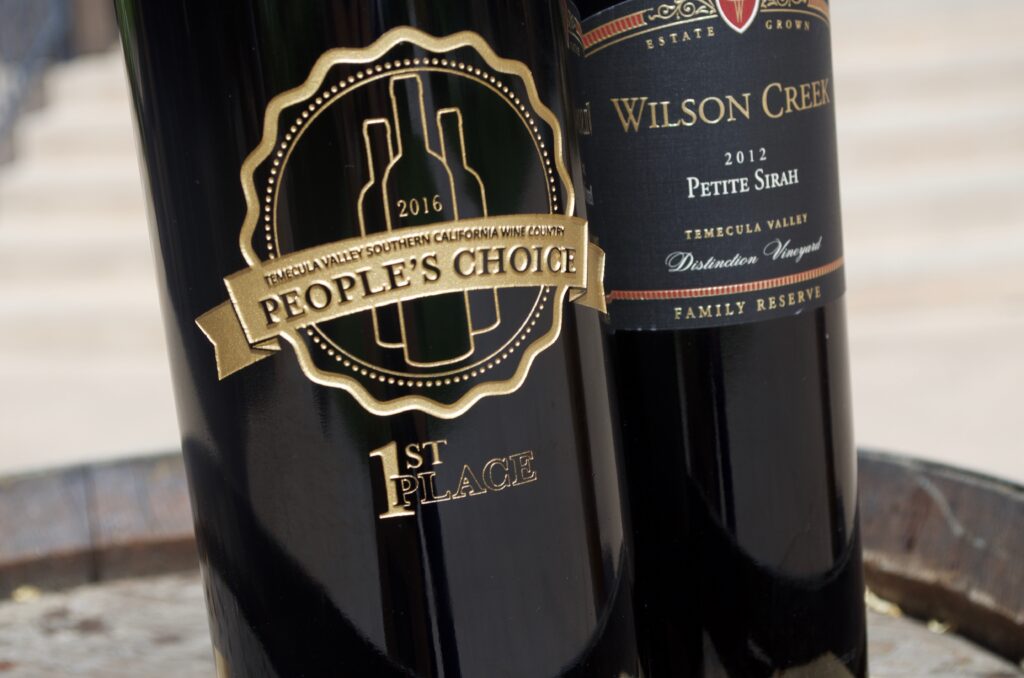Wilson Creek Blog
Events, News, Recipes & more!
The Different Varietals of Grapes Grown at Wilson Creek and their Unique Characteristics
Posted on September 15, 2023 in Wine 101






The Best Wine for Every Occasion: A guide to Choosing the Right Wine
Posted on August 30, 2023 in Wine 101
Wilson Creek Wine Spotlight: Almond Sparkling Wine (Formerly Almond Champagne)
Posted on July 13, 2023 in Wine 101 Indulge in the delightful flavors of Wilson Creek Almond Sparkling Wine, formerly known as Almond Champagne. This beloved sparkling wine with unique taste has been a favorite among wine enthusiasts for over 20 years!
Indulge in the delightful flavors of Wilson Creek Almond Sparkling Wine, formerly known as Almond Champagne. This beloved sparkling wine with unique taste has been a favorite among wine enthusiasts for over 20 years! What is Almond Sparkling Wine?
Wilson Creek Almond Sparkling Wine offers a unique and delightful taste experience. The combination of a crisp and effervescent sparkling wine with the irresistible flavor of almond creates a harmonious and indulgent flavor profile. When you take a sip, you’ll be greeted with a subtle almond aroma, followed by a smooth and creamy mouthfeel on your palate. The bubbles add a refreshing and lively sensation, enhancing the overall taste experience. The almond flavor is present but not overpowering, allowing the sparkling wine’s elegance to shine through. The result is a delicious and balanced blend that is both refreshing and satisfying.
A Refreshing Sparkling Wine Infused with Natural Almond Flavors
Experience the Perfect Blend of Elegance and Convenience with Wilson Creek’s Almond Sparkling Cans!
>>Shop Now
Whether it is in a bottle or in a can this sparkling wine is truly the perfect companion. So the next time you’re celebrating a special occasion, toasting to life’s victories, or simply treating yourself to a moment of joy sit back and enjoy a glass of bubbly!
Convince Dad to go Wine Tasting!
Posted on June 12, 2023 in Uncategorized
the Grille.
10 Wine & Food Pairings to Impress your Guests
Posted on June 8, 2023 in Wine & Food
- Cabernet Sauvignon and Steak: This classic pairing is a match made in heaven. The bold flavors of a Cabernet Sauvignon complement the rich, meaty flavors of a juicy steak.
- Chardonnay and Lobster: The buttery texture and delicate flavor of lobster pairs perfectly with the subtle sweetness of a Chardonnay.
- Pinot Noir and Salmon: The light, fruity flavors of a Pinot Noir work well with the rich, oily flavors of salmon, making this a popular pairing for seafood lovers.
- Sauvignon Blanc and Goat Cheese: The crisp acidity of a Sauvignon Blanc balances out the tangy, creamy flavors of goat cheese, creating a harmonious pairing.
- Merlot and Pasta with Tomato Sauce: The soft tannins and fruity flavors of a Merlot complement the acidity of tomato sauce, making it a great pairing for pasta dishes.
- Syrah and BBQ: The smoky, bold flavors of BBQ are perfectly complemented by the full-bodied, spicy flavors of a Syrah.
- Sparkling Limoncello and Fruit Salad: The citrusy, effervescent flavors of Sparkling Limoncello pair perfectly with the fresh, juicy flavors of a fruit salad. This pairing is light, refreshing, and perfect for a summer brunch or afternoon gathering.
- Malbec and Beef Tacos: The robust, full-bodied flavors of a Malbec pair perfectly with the rich, savory flavors of beef tacos.
- Sparkling Rosé and Charcuterie: The light, refreshing flavors of a Rosé complement the salty, savory flavors of cured meats, making it a great pairing for charcuterie boards.
- Viognier and Indian Curry: Viognier is a white wine that is known for its floral aromas, fruit flavors, and acidity. It pairs well with a variety of dishes and is especially popular with spicy foods. The fruity flavors and acidity of Viognier balance out the heat and spice of Indian curry, making it a great pairing for this popular dish. The floral aromas of Viognier also complement the complex flavors and aromas of the spices used in Indian cooking.



